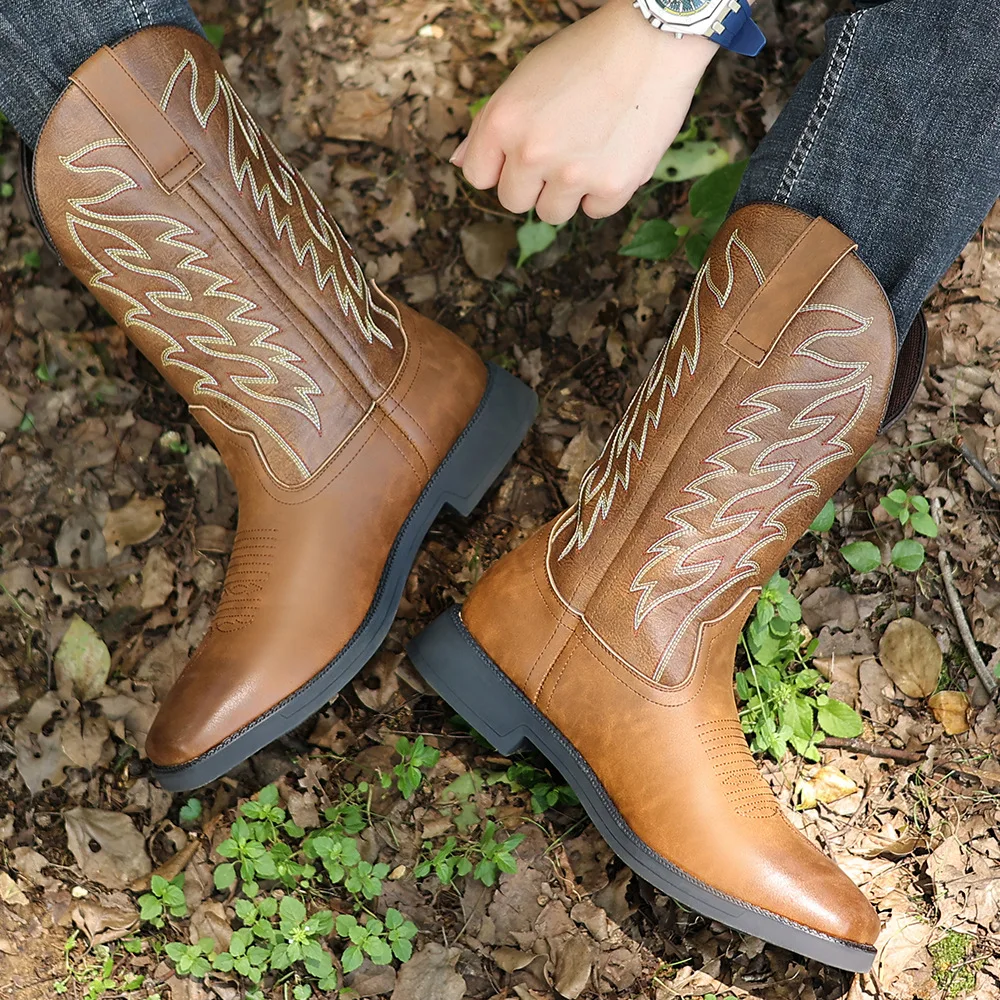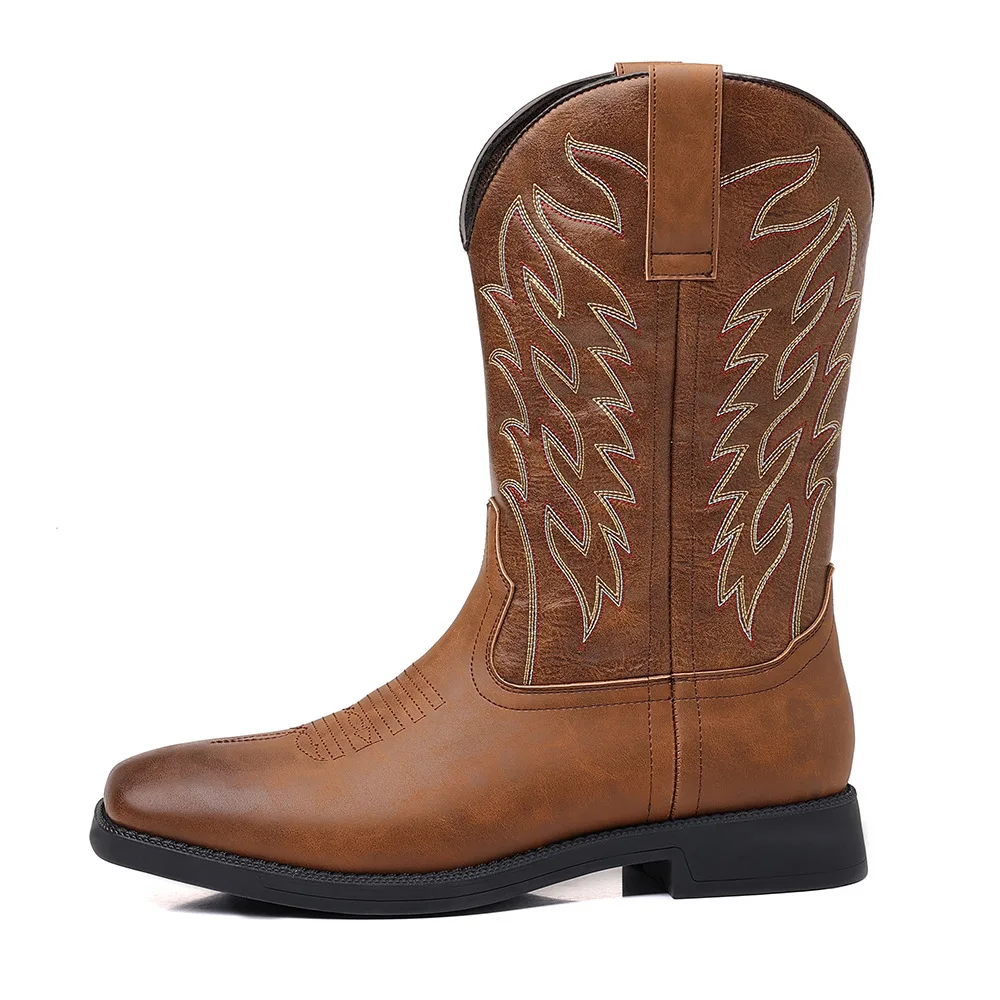Introduction
Cowboy boots are more than just footwear; they are a symbol of tradition, craftsmanship, and rugged individuality. Whether you’re an aspiring cowboy, a fashion enthusiast, or simply someone who appreciates high-quality, well-made shoes, understanding what makes a good pair of good cowboy boots is essential. This guide will delve into the key factors that define good cowboy boots, exploring everything from materials and craftsmanship to fit and style.

The Importance of Material in Cowboy Boots
Leather: The Primary Material
When it comes to cowboy boots, leather is the primary material that defines quality and durability. The type of leather used can significantly impact the comfort, longevity, and appearance of the boots. There are several types of leather commonly used in cowboy boots:
- Full-Grain Leather: This is the highest quality leather you can find in cowboy boots. Full-grain leather comes from the top layer of the hide, which retains the natural texture and grain. It is extremely durable and develops a unique patina over time, enhancing its appearance and character. Full-grain leather is often used in high-end cowboy boots due to its superior quality and longevity.
- Top-Grain Leather: Slightly lower in quality compared to full-grain leather, top-grain leather is also quite durable and is used in many quality cowboy boots. It is sanded and buffed to remove imperfections, resulting in a smoother finish. While it lacks the full grain’s natural texture, it still offers good durability and a refined look.
- Bonded Leather: Bonded leather is made from scraps of leather that are bonded together with adhesives. This type of leather is less durable and often used in lower-quality cowboy boots. It does not age as well as full-grain or top-grain leather and is generally not preferred by those looking for high-quality boots.
- Exotic Leathers: Some cowboy boots feature exotic leathers like ostrich, alligator, or snake. These materials are often used in high-end or specialty boots. Exotic leathers offer unique textures and patterns but require special care to maintain their appearance and integrity.
Stitching and Construction
The construction of cowboy boots plays a crucial role in their overall quality. Well-made cowboy boots are constructed with attention to detail, ensuring durability and comfort. The key aspects to look for include:
- Goodyear Welt Construction: This method involves stitching the upper part of the boot to a welt (a strip of leather or rubber) that is then attached to the sole. Goodyear welted boots are known for their durability and ability to be resoled, extending the life of the boots.
- Hand-Stitched Details: High-quality cowboy boots often feature hand-stitched details, especially in the decorative elements. Hand-stitching adds an extra level of craftsmanship and precision, contributing to both the durability and aesthetic appeal of the boots.
- Reinforced Toe and Heel: A good pair of cowboy boots will have reinforced toes and heels to provide additional support and protect against wear and tear. This reinforcement can be achieved through additional layers of leather or specialized construction techniques.
Finding the Perfect Fit
Measuring Your Feet
A proper fit is crucial for both comfort and performance in cowboy boots. Here’s how to ensure you find the right size:
- Measure Your Foot Length and Width: Use a tape measure to determine the length and width of your feet. This will help you find the appropriate size and width for your cowboy boots. Remember to measure both feet, as one foot may be slightly larger than the other.
- Account for Sock Thickness: When measuring your feet, consider the thickness of the socks you plan to wear with your cowboy boots. This will ensure that the boots fit comfortably with your chosen socks.
- Try Boots on at the End of the Day: Feet tend to swell throughout the day, so it’s best to try on cowboy boots in the afternoon or evening. This will give you a more accurate idea of how the boots will fit during daily wear.
Breaking In Your Boots
Even high-quality cowboy boots may require a breaking-in period. Here are some tips to help you get the most out of this process:
- Wear Them Indoors: Start by wearing your cowboy boots indoors for short periods. This allows the boots to conform to the shape of your feet gradually.
- Use Boot Stretch Spray: If your boots are too tight, consider using a boot stretch spray to soften the leather and help it stretch more easily.
- Consult a Professional: If you’re struggling with discomfort, consider taking your boots to a professional cobbler. They can make adjustments to improve the fit.
Style and Functionality
Classic vs. Modern Designs
Cowboy boots come in various styles, each with its own unique characteristics. Choosing the right style depends on personal preference and intended use. Here’s a breakdown of some popular styles:
- Classic Cowboy Boots: These boots typically feature a pointed toe, high heel, and traditional stitching patterns. They are designed for both style and function, making them suitable for riding and everyday wear.
- Western Work Boots: Designed for practicality, these boots often have a square toe and lower heel. They are built for durability and comfort, making them ideal for long hours of work.
- Fashion Cowboy Boots: Modern cowboy boots may incorporate contemporary designs and materials. These boots focus more on aesthetics and may include embellishments like studs, fringe, or exotic leathers.

Choosing the Right Heel Height
Heel height can affect both the style and functionality of cowboy boots. Here’s a guide to different heel heights and their uses:
- Roper Heels: These are low and flat, designed for comfort and stability. They are ideal for everyday wear and work situations where comfort is a priority.
- Stockman Heels: Slightly higher than roper heels, stockman heels offer a balance between style and functionality. They are suitable for both riding and casual wear.
- Walking Heels: These have a moderate height and are designed for comfortable walking. They provide a good mix of style and comfort for everyday use.
Caring for Your Boots
Regular Maintenance
To extend the life of your boot, regular maintenance is essential. Here are some key tips:
- Clean the Leather: Use a soft brush or cloth to remove dirt and dust from the surface of your boots. For deeper cleaning, use a leather cleaner that is appropriate for the type of leather your boots are made from.
- Condition the Leather: Apply a leather conditioner regularly to keep the leather supple and prevent it from drying out. Conditioning helps maintain the leather’s natural oils and extends its lifespan.
- Store Properly: Store your cowboy boots in a cool, dry place away from direct sunlight. Use boot trees or stuff them with newspaper to maintain their shape.
Repairing Damages
If your cowboy boots sustain damage, addressing it promptly can prevent further issues:
- Replace Worn Out Soles: If the soles of your boots are worn out, consider having them replaced by a professional cobbler. Resoling can significantly extend the life of your boots.
- Repair Scuffs and Scratches: For minor scuffs and scratches, use a leather repair kit to restore the appearance of your boots. Follow the instructions carefully to achieve the best results.
- Seek Professional Help: For more serious repairs, such as structural damage or extensive scuffing, consult a professional cobbler. They have the expertise to handle complex repairs and ensure your boots are restored to their original condition.

Conclusion
Selecting and maintaining high-quality boots requires attention to detail and a good understanding of what makes a boot great. By focusing on materials, construction, fit, and style, you can find a pair of boots that not only look great but also provide lasting comfort and functionality. Whether you’re looking for a classic design or something more contemporary, the right pair of cowboy boots can make a significant difference in your wardrobe. Proper care will ensure that your boots remain a cherished part of your collection for years to come.
